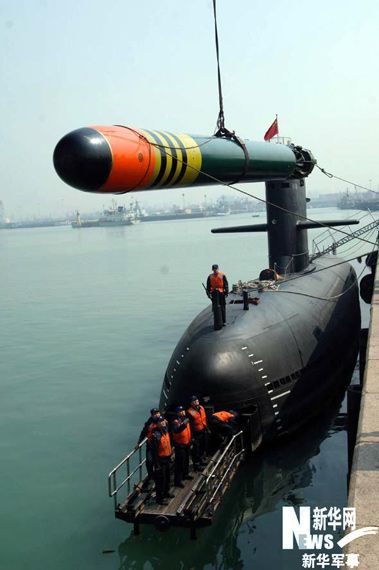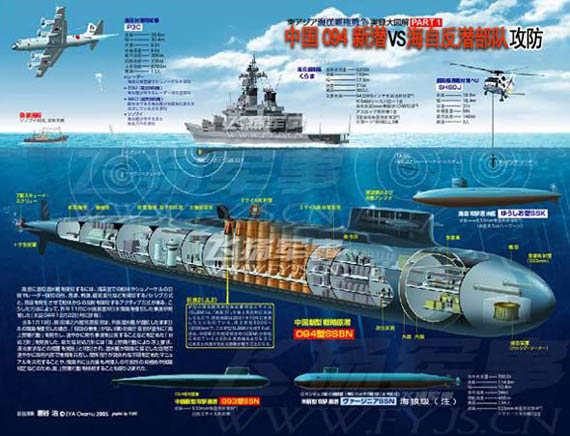Fuerza Submarina
+62
orlando jose navas pachec
Anti-imperialista
belushitaxx
CIVICO-MILITAR
Sgt.Elias
Onyx
Musthafa
TRUCO
DaniHound
Prietocol
delta074
blitzkrieg
Chaco
Tato
vilnedaj
XAMBER1
UNASUR
nass
delta 0074
panzerbrutalis
Cevarez
Xammar
apofis
Krechet
vnzla_zulia
INFANTRYMAN
gustavog182
manuel
Chutes
militar
LUIS RUIZ
eldoctorchiflado
Exar-Kun
JOSNEG67
Gladiador
RODOLFO MARCHAN
Arpia
horaes
WOLFRANK
erys
achue2
Faust
taurus38
Acheron
Lord of war
JML
lossadax
belmont
daniel o'leary
Ch0pos
aquiles
balemm
Angel
klausen
nick7777
Daniel Ramirez (Zucarito)
J0SEFERNAND0
chicharron
josegazcon
casper
zuhe
Gerardo
66 participantes
Página 39 de 40.
Página 39 de 40. •  1 ... 21 ... 38, 39, 40
1 ... 21 ... 38, 39, 40 
 Re: Fuerza Submarina
Re: Fuerza Submarina
Onyx escribió:Postee esa notaporque la considro improtante para documentar loque dijo Chñávez enlanota queposteo Delta, se compraron en 2007 y ahora ya estan listos. Veremos dentro de dos semanas
No se compro nada, es mas hace dias coloque una nota de prensa donde se decia que esa compra se hecho para atras pq Rusia no tenia disponibles los sistemas de propulsion AIP
 Re: Fuerza Submarina
Re: Fuerza Submarina
MM habra que ver la calidad del opinador que escribio este articulo, el señor Maxim Klimov no valla a ser que estemos commiendo ñoña de gratis....
Lo que dice Maxim Klimov no tiene mucha importancia, pero cuando usa como fuente a Rudolf Gusev, la cosa cambia, Gusev fué el segundo al mando del departamento de armas submarinas de la Marina Soviética y escribió un libro en el 2004 que algún día compraré si logro cuadrar el envío, se traduce algo así como "Ces't la vie de la torpedos" y su artículo hace amplias citas del mismo. Es más, hay una versión "aumentada" del artículo que se consigue en uno de los links que dejé donde Maxim explica con detalles y hace citas más amplias del trabajo de Gusev.
Si revisas los foros rusos que dejé como enlaces te das cuenta que la gente no discute precisamente si lo que dice Maxim es un disparate o no.

chicharron- Cabo Segundo
- Cantidad de envíos : 2036
Fecha de inscripción : 28/04/2009
Localización : en un lugar donde abunda el queso
 Re: Fuerza Submarina
Re: Fuerza Submarina
Chamos, yo quisiera saber una cosas ¿cuando fue que chavez dijo que iban a llegar submarinos NUEVOS?  . el solo dijo que iban a recibir algunas "unidades" pero no sabemos si son nuestros viejos subs o si en verdad son nuevas unidades. me tienen mareado :S!!
. el solo dijo que iban a recibir algunas "unidades" pero no sabemos si son nuestros viejos subs o si en verdad son nuevas unidades. me tienen mareado :S!!

belushitaxx- Distinguido
- Cantidad de envíos : 1722
Fecha de inscripción : 15/07/2010
Localización : Venezuela
 Re: Fuerza Submarina
Re: Fuerza Submarina
Federation of American Scientists
http://www.fas.org/man/dod-101/sys/ship/row/rus/877.htm
Project 877 Kilo class
Project 636 Kilo class
Diesel-Electric Torpedo Submarine
The Kilo Class (Project 877) submarine was designed for anti-submarine and anti-ship warfare in the protection of naval bases, coastal installations and sea lanes, and also for general reconnaissance and patrol missions. The Kilo is considered to be to be one of the quietest diesel submarines in the world. The submarine consists of six watertight compartments separated by transverse bulkheads in a pressurised double-hull. This design and the submarine's good reserve buoyancy lead to increased survivability if the submarine is holed, even with one compartment and two adjacent ballast tanks flooded. The foreplanes are positioned on the upper hull in front of the fin or sail. The command and control systems and fire control systems are located in the main control room which is sealed off from the other compartments.
The Project 636 design is a generally improved development of the Project 877EKM Kilo class that represents an interim design between the standard 'Kilo' and the new Lada project. The Project 636 is actively promoted for the world market by the Rosvoorouzhenie state-owned company. This submarine has improved range, firepower, acoustic characteristics and reliability. Visually distinguished by a step on the aft casing, the length of the hull is extended by two frame spacings (2 x 600 mm). The additional length permitted increasing the power of diesel-generators and mounting them on improved shock-absorbing support, and reducing twofold the main propulsion shaft speed. Owing to these improvements, the submarine speed and sea endurance were increased, while the noise level was radically decreased. The low noise level of the submarine has been achieved with the selection of quiet machinery, vibration and noise isolation and a special anti-acoustic rubber coating applied on the outer hull surface.
The Project 636 is equipped with six 533 mm forward torpedo tubes situated in the nose of the submarine and carries eighteen torpedoes with six in the torpedo tubes and twelve stored on the racks. Alternatively the torpedo tubes can deploy mines. The submarine can carry 24 mines with two in each of the six tubes and twelve on the racks. Two torpedo tubes are designed for firing remote-controlled torpedoes with a very high accuracy. All torpedo tubes and their service systems provide effective firing from periscope to operational depths. The computer-controlled torpedo system is provided with a quick-loading device. It takes only 15 seconds to prepare stand-by torpedo tubes for firing: The first salvo is fired within two minutes and the second within five minutes.
The Russian fleet operates three variants of the Kilo 877: the basic 877; the 877K that has an improved fire-control system; and the 877M that has wire-guided torpedoes from two tubes. Export models, designated with an 'E' suffix, are generally similar though with some reduced features. A total of at least 26 and perhaps as many as 30 were built for the Russian navy, one of which was subequently exported to Iran. All the 30 Kilo-class submarines built for service with the Russian Navy are designated Project 877, although 15 of these are the earlier-developed 877EKM and 15 the later 636 versions. As of early 2000 as many as 14 units were believed to remain active, with an additional 7 in reserve, though specific identities are not known.
As of early 1998 construction of the Project 877EKM submarines was nearly completed, with only one submarine left under construction in St.Petersburg for the Indian Navy. Russia exported 21 Project 877 and 636 submarines, including: India - 10, and China - 4, Iran - 3, Algeria - 2, Poland - 1, Romania - 1.
On 04 August 1993, Iran took delivery of a second Russian Kilo-class diesel submarine, and the third arrived 18 January 1996. Russia went ahead with the first two deliveries despite vigorous US protests. In response to Administration pressure and US sanctions legislation, Russia formally pledged in June 1995 not to enter any new arms contracts with Iran, although prior arms contracts could be implemented.
India took delivery of the first of the two additional Russian-built Kilo class submarines in January 1999. On 17 August 2000 the Sindhushastra began the two month voyage from St Petersburg to India. The 877EKM submarine was the last in a series of 10 submarines built at Russian shipyards for Indian customers. In August 2000 the Zvezdochka engineering enterprise at Severodvinsk started the work of servicing and modernizing the Indian series-877EKM submarine Sinduratna, the second Indian sub to have had a refit at Zvezdochka. In 1999 the Indian Navy took delivery of the Sinduvir, the first submarine to have been modernized at Severodvinsk. The Sinduratna will be the second Indian submarine to be fitted with four ZM-54E1 missiles, with a range of 300 km. The missiles are part of the latest Klab-S anti-ship missile complex designed by the Novator bureau at Yekaterinburg.
In the spring of 1997, the first Project 636 submarine was launched, and China became the first customer for this submarine. The last of four export Kilo-class boats for China, the second improved model Project 636 unit, was launched on 17 June 1998 and departed the Baltic aboard a heavy-lift ship on 11 December 1998, bound for the submarine base at Ning-bo. China is also said to be interested in purchasing several more 636 series submarines, one of which is now in an unfinished state at the Krasnoye Sormovo yard in Nizhniy Novgorod, while others may be built at the Admiralteyskiye Verfi [Admiralty Shipyards] in St Petersburg.
Specifications
Designation Project 877 Paltus
Kilo Project 636
Designer Rubin Rubin
Builder Admiralty Shipyard (Sudomekh),
Shipyard 199, Nizhniy Novgorod
[completed at Sevmashpredpriyatiye, Severodvinsnk]
Shipyard 112, Komsolol'sk-na-Amur Admiralty Shipyard
Displacement (tons) 2,300-2,325 tons Surfaced
3,076-3,950 tons Full load submerged 2,350 tons Surfaced
3,126-4,000 tons Full load submerged
Speed (kts): 10-12 knots Surfaced
17-25 knots Submerge 11 knots Surfaced
20 knots Submerged
Dimensions (m): 70.0-72.6 meters long
9.9 meters beam
6.2-6.5 meters draft 72.6-73.8 meters long
9.9 meters beam
6.3-6.5 meters draft
Propulsion: diesel and electric motors
2 x 1000 kW Diesel generators
1 x 5,500-6,800 shp Propulsion motor
1 x 7-blade [? or 6-blade] fixed-pitch Propeller
diesel and electric motors
Diving depth: 240 meters Operational
300 meters Maximum 250 meters Operational
300 meters Maximum
17.5 meters Periscope
Endurance: 6,000 miles With snorkel (@ 7 knots)
400 miles Submerged (@ 3 knots)
12.7 miles At full run (@ 21 knots)
45 days Sea Endurance 7,500 miles With snorkel (@ 7 knots)
400 miles Submerged (@ 3 knots)
?? miles At full run (@ 20 knots)
45 days Sea Endurance
Armament:
# Missiles: 8 Strela-3 (SA-N-8 Gremlin) or
# 8 Igla (SA-N-10 Gimlet)
# 8 Strela-3 (SA-N-8 Gremlin) or
# 8 Igla (SA-N-10 Gimlet)
# Torpedoes: 6/533 mm Torpedoe Tubes 18 VA-111 (w: c/nucl) Torpedoes or
# 24 mines
# 6/533 mm Torpedoe Tubes 18 VA-111 Torpedoes or
# 24 mines
# Systems: radio communications
# combat control information system
# navigation system
# 1 MRK-50 (Snoop Tray-2)general purpose detection radar
# MGK-400 Rubikon (Shark Teeth) active/passive Sonar
# 2 Periscopes
[one for commander, one for air defence]
# radio communications
# combat control information system
# navigation system
# 1 MRK-50E (Snoop Tray-2) general purpose detection radar
# 1 MGK-400EM Rubikon (Shark Teeth) active/passive Sonar
# 2 Periscopes
[one for commander, one for air defence]
Class Listing
Unit Shipyard Fleet Chronology Notes
# number Name Laid Down Launched Comm. Stricken
Project 877, 877K, 877M ("Paltus" type), NATO code "Kilo"
1 B-248 SY 199 ---------- 09/**/1980 04/**/1982 09/12/1982 operational
2 B-177 SY 112 ---------- ---------- 1982-94 lead ship built at NN
3 B-187 SY 199 or SY 112 ---------- ---------- 1982-94
4 B-190 SY 199 or SY 112 ---------- ---------- 1982-94
5 B-219 SY 199 or SY 112 ---------- ---------- 1982-94 1992 10/1992 sold to Iran
6 B-224 SY 199 or SY 112 ---------- ---------- 1982-94 2000 in reserve?
7 B-227 SY 199 or SY 112 ---------- ---------- 1982-94 2000 in reserve?
8 B-229 SY 199 or SY 112 ---------- ---------- 1982-94 2000 in reserve?
9 B-260 SY 199 or SY 112 ---------- ---------- 1982-94 2000 in reserve?
10 B-345 SY 199 or SY 112 ---------- ---------- 1982-94 2000 in reserve?
11 B-354 SY 199 or SY 112 ---------- ---------- 1982-94 04/04/1989 fire
2000 in reserve?
12 B-394 Komsomolets Tadjkistana SY 199 or SY 112 ---------- ---------- 1982-94 08/26/1980 named
1991 unnamed
2000 in reserve?
13 B-401 SY 199 or SY 112 ---------- ---------- 1982-94
14 B-402 SY 199 or SY 112 ---------- ---------- 1982-94
15 B-404 Tyumensky Komsomolets SY 199 or SY 112 ---------- ---------- 1982-94 1991 unnamed
16 B-405 SY 199 or SY 112 ---------- ---------- 1982-94
17 B-425 SY 199 or SY 112 ---------- ---------- 1982-94
18 B-437 Magnitogorsky Komsomolets SY 199 or SY 112 ---------- ---------- 1982-94 06/09/1980 named
1991 unnamed
19 B-439 SY 199 or SY 112 ---------- ---------- 1982-94
20 B-445 SY 199 or SY 112 ---------- ---------- 1982-94
21 B-459 SY 199 or SY 112 ---------- ---------- 1982-94
22 B-464 SY 199 or SY 112 ---------- ---------- 1982-94
23 B-468 SY 199 or SY 112 ---------- ---------- 1982-94
24 B-470 SY 199 or SY 112 ---------- ---------- 1982-94
25 B-471 SY 199 or SY 112 ---------- ---------- 1982-94
26 B-494 SY 199 or SY 112 ---------- ---------- 1982-94
27 B-800 SY 199 or SY 112 ---------- ---------- 1991-93
28 B-806 SY 199 or SY 112 ---------- ---------- 1991-93
29 B-871 SY 199 or SY 112 ---------- ---------- 1991-93
30 B-880 Del'fin SY 199 or SY 112 ---------- ---------- 1991-93
Project 877E, NATO code "Kilo"(export type)
1 SY 196 ---------- ---------- 1986 1 for Romania
Project 877EKM, NATO code "Kilo" (export type)
1 SY 196 ---------- ---------- 06/21/1986 1 for Poland
2 SY 196 ---------- ---------- 9 for India (1986-)
3 SY 196 ---------- ---------- 9 for India (1986-)
4 SY 196 ---------- ---------- 9 for India (1986-)
5 SY 196 ---------- ---------- 9 for India (1986-)
6 SY 196 ---------- ---------- 9 for India (1986-)
7 SY 196 ---------- ---------- 9 for India (1986-)
8 SY 196 ---------- ---------- 9 for India (1986-)
9 SY 196 ---------- ---------- 9 for India (1986-)
10 SY 196 ---------- ---------- 9 for India (1986-)
11 SY 196 ---------- ---------- 08/17/2000 10 for India
12 SY 196 ---------- ---------- 1987 2 for Algeria
13 SY 196 ---------- ---------- 01/1988 2 for Algeria
14 1996 2 built for Iran
15 1996 2 built for Iran
16 1995 2 for China
17 1995 2 for China
Project 636, NATO code "Kilo"(export type)
1 BN-529 Rossiya display ship of Rosvoorouzhenie
2 1998 2 for China
3 1998 2 for China
Sources and Resources
* SSK Kilo Class (Type 636) - Attack Submarine @ naval-technology.com
* SSK Kilo Class (Type 877EKM) - Attack Submarine @ naval-technology.com
* Russian Submarines @ World Navies Today
* Russian Submarine List @ Steel in the Deep Submarine Site
* Kilo class @ USNI Military Database
http://www.fas.org/man/dod-101/sys/ship/row/rus/877.htm
Project 877 Kilo class
Project 636 Kilo class
Diesel-Electric Torpedo Submarine
The Kilo Class (Project 877) submarine was designed for anti-submarine and anti-ship warfare in the protection of naval bases, coastal installations and sea lanes, and also for general reconnaissance and patrol missions. The Kilo is considered to be to be one of the quietest diesel submarines in the world. The submarine consists of six watertight compartments separated by transverse bulkheads in a pressurised double-hull. This design and the submarine's good reserve buoyancy lead to increased survivability if the submarine is holed, even with one compartment and two adjacent ballast tanks flooded. The foreplanes are positioned on the upper hull in front of the fin or sail. The command and control systems and fire control systems are located in the main control room which is sealed off from the other compartments.
The Project 636 design is a generally improved development of the Project 877EKM Kilo class that represents an interim design between the standard 'Kilo' and the new Lada project. The Project 636 is actively promoted for the world market by the Rosvoorouzhenie state-owned company. This submarine has improved range, firepower, acoustic characteristics and reliability. Visually distinguished by a step on the aft casing, the length of the hull is extended by two frame spacings (2 x 600 mm). The additional length permitted increasing the power of diesel-generators and mounting them on improved shock-absorbing support, and reducing twofold the main propulsion shaft speed. Owing to these improvements, the submarine speed and sea endurance were increased, while the noise level was radically decreased. The low noise level of the submarine has been achieved with the selection of quiet machinery, vibration and noise isolation and a special anti-acoustic rubber coating applied on the outer hull surface.
The Project 636 is equipped with six 533 mm forward torpedo tubes situated in the nose of the submarine and carries eighteen torpedoes with six in the torpedo tubes and twelve stored on the racks. Alternatively the torpedo tubes can deploy mines. The submarine can carry 24 mines with two in each of the six tubes and twelve on the racks. Two torpedo tubes are designed for firing remote-controlled torpedoes with a very high accuracy. All torpedo tubes and their service systems provide effective firing from periscope to operational depths. The computer-controlled torpedo system is provided with a quick-loading device. It takes only 15 seconds to prepare stand-by torpedo tubes for firing: The first salvo is fired within two minutes and the second within five minutes.
The Russian fleet operates three variants of the Kilo 877: the basic 877; the 877K that has an improved fire-control system; and the 877M that has wire-guided torpedoes from two tubes. Export models, designated with an 'E' suffix, are generally similar though with some reduced features. A total of at least 26 and perhaps as many as 30 were built for the Russian navy, one of which was subequently exported to Iran. All the 30 Kilo-class submarines built for service with the Russian Navy are designated Project 877, although 15 of these are the earlier-developed 877EKM and 15 the later 636 versions. As of early 2000 as many as 14 units were believed to remain active, with an additional 7 in reserve, though specific identities are not known.
As of early 1998 construction of the Project 877EKM submarines was nearly completed, with only one submarine left under construction in St.Petersburg for the Indian Navy. Russia exported 21 Project 877 and 636 submarines, including: India - 10, and China - 4, Iran - 3, Algeria - 2, Poland - 1, Romania - 1.
On 04 August 1993, Iran took delivery of a second Russian Kilo-class diesel submarine, and the third arrived 18 January 1996. Russia went ahead with the first two deliveries despite vigorous US protests. In response to Administration pressure and US sanctions legislation, Russia formally pledged in June 1995 not to enter any new arms contracts with Iran, although prior arms contracts could be implemented.
India took delivery of the first of the two additional Russian-built Kilo class submarines in January 1999. On 17 August 2000 the Sindhushastra began the two month voyage from St Petersburg to India. The 877EKM submarine was the last in a series of 10 submarines built at Russian shipyards for Indian customers. In August 2000 the Zvezdochka engineering enterprise at Severodvinsk started the work of servicing and modernizing the Indian series-877EKM submarine Sinduratna, the second Indian sub to have had a refit at Zvezdochka. In 1999 the Indian Navy took delivery of the Sinduvir, the first submarine to have been modernized at Severodvinsk. The Sinduratna will be the second Indian submarine to be fitted with four ZM-54E1 missiles, with a range of 300 km. The missiles are part of the latest Klab-S anti-ship missile complex designed by the Novator bureau at Yekaterinburg.
In the spring of 1997, the first Project 636 submarine was launched, and China became the first customer for this submarine. The last of four export Kilo-class boats for China, the second improved model Project 636 unit, was launched on 17 June 1998 and departed the Baltic aboard a heavy-lift ship on 11 December 1998, bound for the submarine base at Ning-bo. China is also said to be interested in purchasing several more 636 series submarines, one of which is now in an unfinished state at the Krasnoye Sormovo yard in Nizhniy Novgorod, while others may be built at the Admiralteyskiye Verfi [Admiralty Shipyards] in St Petersburg.
Specifications
Designation Project 877 Paltus
Kilo Project 636
Designer Rubin Rubin
Builder Admiralty Shipyard (Sudomekh),
Shipyard 199, Nizhniy Novgorod
[completed at Sevmashpredpriyatiye, Severodvinsnk]
Shipyard 112, Komsolol'sk-na-Amur Admiralty Shipyard
Displacement (tons) 2,300-2,325 tons Surfaced
3,076-3,950 tons Full load submerged 2,350 tons Surfaced
3,126-4,000 tons Full load submerged
Speed (kts): 10-12 knots Surfaced
17-25 knots Submerge 11 knots Surfaced
20 knots Submerged
Dimensions (m): 70.0-72.6 meters long
9.9 meters beam
6.2-6.5 meters draft 72.6-73.8 meters long
9.9 meters beam
6.3-6.5 meters draft
Propulsion: diesel and electric motors
2 x 1000 kW Diesel generators
1 x 5,500-6,800 shp Propulsion motor
1 x 7-blade [? or 6-blade] fixed-pitch Propeller
diesel and electric motors
Diving depth: 240 meters Operational
300 meters Maximum 250 meters Operational
300 meters Maximum
17.5 meters Periscope
Endurance: 6,000 miles With snorkel (@ 7 knots)
400 miles Submerged (@ 3 knots)
12.7 miles At full run (@ 21 knots)
45 days Sea Endurance 7,500 miles With snorkel (@ 7 knots)
400 miles Submerged (@ 3 knots)
?? miles At full run (@ 20 knots)
45 days Sea Endurance
Armament:
# Missiles: 8 Strela-3 (SA-N-8 Gremlin) or
# 8 Igla (SA-N-10 Gimlet)
# 8 Strela-3 (SA-N-8 Gremlin) or
# 8 Igla (SA-N-10 Gimlet)
# Torpedoes: 6/533 mm Torpedoe Tubes 18 VA-111 (w: c/nucl) Torpedoes or
# 24 mines
# 6/533 mm Torpedoe Tubes 18 VA-111 Torpedoes or
# 24 mines
# Systems: radio communications
# combat control information system
# navigation system
# 1 MRK-50 (Snoop Tray-2)general purpose detection radar
# MGK-400 Rubikon (Shark Teeth) active/passive Sonar
# 2 Periscopes
[one for commander, one for air defence]
# radio communications
# combat control information system
# navigation system
# 1 MRK-50E (Snoop Tray-2) general purpose detection radar
# 1 MGK-400EM Rubikon (Shark Teeth) active/passive Sonar
# 2 Periscopes
[one for commander, one for air defence]
Class Listing
Unit Shipyard Fleet Chronology Notes
# number Name Laid Down Launched Comm. Stricken
Project 877, 877K, 877M ("Paltus" type), NATO code "Kilo"
1 B-248 SY 199 ---------- 09/**/1980 04/**/1982 09/12/1982 operational
2 B-177 SY 112 ---------- ---------- 1982-94 lead ship built at NN
3 B-187 SY 199 or SY 112 ---------- ---------- 1982-94
4 B-190 SY 199 or SY 112 ---------- ---------- 1982-94
5 B-219 SY 199 or SY 112 ---------- ---------- 1982-94 1992 10/1992 sold to Iran
6 B-224 SY 199 or SY 112 ---------- ---------- 1982-94 2000 in reserve?
7 B-227 SY 199 or SY 112 ---------- ---------- 1982-94 2000 in reserve?
8 B-229 SY 199 or SY 112 ---------- ---------- 1982-94 2000 in reserve?
9 B-260 SY 199 or SY 112 ---------- ---------- 1982-94 2000 in reserve?
10 B-345 SY 199 or SY 112 ---------- ---------- 1982-94 2000 in reserve?
11 B-354 SY 199 or SY 112 ---------- ---------- 1982-94 04/04/1989 fire
2000 in reserve?
12 B-394 Komsomolets Tadjkistana SY 199 or SY 112 ---------- ---------- 1982-94 08/26/1980 named
1991 unnamed
2000 in reserve?
13 B-401 SY 199 or SY 112 ---------- ---------- 1982-94
14 B-402 SY 199 or SY 112 ---------- ---------- 1982-94
15 B-404 Tyumensky Komsomolets SY 199 or SY 112 ---------- ---------- 1982-94 1991 unnamed
16 B-405 SY 199 or SY 112 ---------- ---------- 1982-94
17 B-425 SY 199 or SY 112 ---------- ---------- 1982-94
18 B-437 Magnitogorsky Komsomolets SY 199 or SY 112 ---------- ---------- 1982-94 06/09/1980 named
1991 unnamed
19 B-439 SY 199 or SY 112 ---------- ---------- 1982-94
20 B-445 SY 199 or SY 112 ---------- ---------- 1982-94
21 B-459 SY 199 or SY 112 ---------- ---------- 1982-94
22 B-464 SY 199 or SY 112 ---------- ---------- 1982-94
23 B-468 SY 199 or SY 112 ---------- ---------- 1982-94
24 B-470 SY 199 or SY 112 ---------- ---------- 1982-94
25 B-471 SY 199 or SY 112 ---------- ---------- 1982-94
26 B-494 SY 199 or SY 112 ---------- ---------- 1982-94
27 B-800 SY 199 or SY 112 ---------- ---------- 1991-93
28 B-806 SY 199 or SY 112 ---------- ---------- 1991-93
29 B-871 SY 199 or SY 112 ---------- ---------- 1991-93
30 B-880 Del'fin SY 199 or SY 112 ---------- ---------- 1991-93
Project 877E, NATO code "Kilo"(export type)
1 SY 196 ---------- ---------- 1986 1 for Romania
Project 877EKM, NATO code "Kilo" (export type)
1 SY 196 ---------- ---------- 06/21/1986 1 for Poland
2 SY 196 ---------- ---------- 9 for India (1986-)
3 SY 196 ---------- ---------- 9 for India (1986-)
4 SY 196 ---------- ---------- 9 for India (1986-)
5 SY 196 ---------- ---------- 9 for India (1986-)
6 SY 196 ---------- ---------- 9 for India (1986-)
7 SY 196 ---------- ---------- 9 for India (1986-)
8 SY 196 ---------- ---------- 9 for India (1986-)
9 SY 196 ---------- ---------- 9 for India (1986-)
10 SY 196 ---------- ---------- 9 for India (1986-)
11 SY 196 ---------- ---------- 08/17/2000 10 for India
12 SY 196 ---------- ---------- 1987 2 for Algeria
13 SY 196 ---------- ---------- 01/1988 2 for Algeria
14 1996 2 built for Iran
15 1996 2 built for Iran
16 1995 2 for China
17 1995 2 for China
Project 636, NATO code "Kilo"(export type)
1 BN-529 Rossiya display ship of Rosvoorouzhenie
2 1998 2 for China
3 1998 2 for China
Sources and Resources
* SSK Kilo Class (Type 636) - Attack Submarine @ naval-technology.com
* SSK Kilo Class (Type 877EKM) - Attack Submarine @ naval-technology.com
* Russian Submarines @ World Navies Today
* Russian Submarine List @ Steel in the Deep Submarine Site
* Kilo class @ USNI Military Database

Onyx- Sargento Mayor de Tercera
- Cantidad de envíos : 5295
Fecha de inscripción : 26/08/2009
Localización : Mérida, Venezuela
 Re: Fuerza Submarina
Re: Fuerza Submarina
JAJAJAJA...!! increible!! quisiera tener el entusiasmo del pana Onyx  !!
!!

belushitaxx- Distinguido
- Cantidad de envíos : 1722
Fecha de inscripción : 15/07/2010
Localización : Venezuela
 Re: Fuerza Submarina
Re: Fuerza Submarina
Onyx tu medicamento, ya es hora.

chicharron- Cabo Segundo
- Cantidad de envíos : 2036
Fecha de inscripción : 28/04/2009
Localización : en un lugar donde abunda el queso
 Re: Fuerza Submarina
Re: Fuerza Submarina
chicharron escribió:MM habra que ver la calidad del opinador que escribio este articulo, el señor Maxim Klimov no valla a ser que estemos commiendo ñoña de gratis....
Lo que dice Maxim Klimov no tiene mucha importancia, pero cuando usa como fuente a Rudolf Gusev, la cosa cambia, Gusev fué el segundo al mando del departamento de armas submarinas de la Marina Soviética y escribió un libro en el 2004 que algún día compraré si logro cuadrar el envío, se traduce algo así como "Ces't la vie de la torpedos" y su artículo hace amplias citas del mismo. Es más, hay una versión "aumentada" del artículo que se consigue en uno de los links que dejé donde Maxim explica con detalles y hace citas más amplias del trabajo de Gusev.
Si revisas los foros rusos que dejé como enlaces te das cuenta que la gente no discute precisamente si lo que dice Maxim es un disparate o no.
ok, capte la idea, pero entonces la solucion mejor cual seria? asumiendo que nos vamos por ese estandar como una hipotesis
Comprar torpedos Chinos que no tienen estos problemas? desarrollar torpedos propios?
El mismo articulo lei que la opcion de importar torpedos (para los Rusos) era un medio parche ya que el hardware era exportable no asi con el software que tendrian que desarrollarlo ellos...
 Re: Fuerza Submarina
Re: Fuerza Submarina
La solución mejor es mirar para otro lado...mira hasta le comienzo a tomar aprecio a los chinos, que más queda.
O esperar hasta el 2012 jajajajjaa.
O esperar hasta el 2012 jajajajjaa.

chicharron- Cabo Segundo
- Cantidad de envíos : 2036
Fecha de inscripción : 28/04/2009
Localización : en un lugar donde abunda el queso
 Re: Fuerza Submarina
Re: Fuerza Submarina
Cuidado y te invierten el 12.chicharron escribió:La solución mejor es mirar para otro lado...mira hasta le comienzo a tomar aprecio a los chinos, que más queda.
O esperar hasta el 2012 jajajajjaa.

jajaja.Lo mejor es hacer mas acercamiento con los Alemanes.
Saludos :

delta074- Coronel
- Cantidad de envíos : 15221
Fecha de inscripción : 31/08/2009
 Re: Fuerza Submarina
Re: Fuerza Submarina
chicharron escribió:La solución mejor es mirar para otro lado...mira hasta le comienzo a tomar aprecio a los chinos, que más queda.
O esperar hasta el 2012 jajajajjaa.
Bueno los Chinos han mejorado muchas cosas a base de diseño Ruso, desde las granadas de RPG-2 para aca... igual los Iranies toman como base equipos Rusos, Americanos, ingleses e incluso Chinos y los mejoran barbaramente...
Ahi esta el Yuan... con AIP funcional, lanza misiles Chinos (aunque no tienen tanto alcance como los CluB-S pero igual mandan al foso cualquier vaina) y muy sigilosos mas que el Song que se le metio al Kitty
 Re: Fuerza Submarina
Re: Fuerza Submarina
delta074 escribió:Cuidado y te invierten el 12.chicharron escribió:La solución mejor es mirar para otro lado...mira hasta le comienzo a tomar aprecio a los chinos, que más queda.
O esperar hasta el 2012 jajajajjaa.
jajaja.Lo mejor es hacer mas acercamiento con los Alemanes.
Saludos :
Nah, mejores son los Scorpens
 Re: Fuerza Submarina
Re: Fuerza Submarina

Esta foto creo que corresponde al lanzamiento de un misil Yj-82 desde un SSK Chino
 Re: Fuerza Submarina
Re: Fuerza Submarina
Gerardo escribió:Creo que es un Yuan recargando armamento, la web original esta en Chino
Sip, acá se observa el carrete de arrastre (el anillo circular justó detrás de la hélice del torpedo) en este aparatico chino...50 años más adelantado que lo más "las de lo las" del reino socialista soviético jajaja.

chicharron- Cabo Segundo
- Cantidad de envíos : 2036
Fecha de inscripción : 28/04/2009
Localización : en un lugar donde abunda el queso
 Re: Fuerza Submarina
Re: Fuerza Submarina
Muy buen articulo sobre el torpedo Yu-6

Last updated: 26 October 2007
The Yu-6 is the 533mm wire-/acoustic-/wake-homing heavy torpedo designed by 705 Institute (also known as Xi’an Precision Machinery Institute), a R&D branch of the China Shipbuilding Industry Corporation (CSIC) in Xi’an, Shaanxi province. The Yu-6 is the most advanced and capable indigenous torpedo in service with the People’s Liberation Army Navy (PLAN), designed to engage both deep-diving submarines and surface ships. The torpedo entered the PLAN service in 2005, carried by the Type 039 (Song class) and Type 039A (Yuan class) conventional submarines, and possibly the newly launched Type 093 (Shang class) and Type 094 (Jin class) nuclear-powered submarines too.
In the mid-1980s, the PLAN decided to develop a new heavy torpedo for both anti-ship warfare (ASuW) and anti-submarine warfare (ASW) roles, by reverse-engineering a single Mk-48 torpedo recovered by Chinese fishermen in the late 1970s or early 1980s. The development project was later put on a halt after few prototypes were produced due to enormous technical difficulties and lack of funding. However, research on the Otto fuel II and wire guidance was continued by a small team.
As the PLAN realised that its current torpedoes were unable to meet its requirements for modern naval warfare, the Yu-6 project was officially revived in 1995, with Dong Chun-Peng appointed as the chief designer. The revised Yu-6 design has possibly incorporated some Russian technologies, particularly the unique wake-homing technology. A number of Chinese organisations were involved in the Yu-6 development, including Shanghai Jiaotong University that developed new alloy for the torpedo casing; Tianjin Rubber Research Institute that supplied the noise-reduction casing for the acoustic seeker; Harbin Electro Carbon Research Institute tasked to develop the graphite material used to make engine valves and other components; Yizheng Shuanghuan Piston Ring Co. Ltd. that developed the piston ring for the torpedo propulsion.
It was reported that the Yu-6 adopts a combined wire + active/passive acoustic + waking-homing guidance for different types of targets. It guidance system reportedly uses an Intel 80486-class microprocessor. The Yu-6 was also the first Chinese torpedo designed with the concepts of modular design and open architecture software programming in mind, so that new technologies and programmes could be readily incorporated whenever they become available.
http://www.sinodefence.com/navy/weapon/yu6.asp


Last updated: 26 October 2007
The Yu-6 is the 533mm wire-/acoustic-/wake-homing heavy torpedo designed by 705 Institute (also known as Xi’an Precision Machinery Institute), a R&D branch of the China Shipbuilding Industry Corporation (CSIC) in Xi’an, Shaanxi province. The Yu-6 is the most advanced and capable indigenous torpedo in service with the People’s Liberation Army Navy (PLAN), designed to engage both deep-diving submarines and surface ships. The torpedo entered the PLAN service in 2005, carried by the Type 039 (Song class) and Type 039A (Yuan class) conventional submarines, and possibly the newly launched Type 093 (Shang class) and Type 094 (Jin class) nuclear-powered submarines too.
In the mid-1980s, the PLAN decided to develop a new heavy torpedo for both anti-ship warfare (ASuW) and anti-submarine warfare (ASW) roles, by reverse-engineering a single Mk-48 torpedo recovered by Chinese fishermen in the late 1970s or early 1980s. The development project was later put on a halt after few prototypes were produced due to enormous technical difficulties and lack of funding. However, research on the Otto fuel II and wire guidance was continued by a small team.
As the PLAN realised that its current torpedoes were unable to meet its requirements for modern naval warfare, the Yu-6 project was officially revived in 1995, with Dong Chun-Peng appointed as the chief designer. The revised Yu-6 design has possibly incorporated some Russian technologies, particularly the unique wake-homing technology. A number of Chinese organisations were involved in the Yu-6 development, including Shanghai Jiaotong University that developed new alloy for the torpedo casing; Tianjin Rubber Research Institute that supplied the noise-reduction casing for the acoustic seeker; Harbin Electro Carbon Research Institute tasked to develop the graphite material used to make engine valves and other components; Yizheng Shuanghuan Piston Ring Co. Ltd. that developed the piston ring for the torpedo propulsion.
It was reported that the Yu-6 adopts a combined wire + active/passive acoustic + waking-homing guidance for different types of targets. It guidance system reportedly uses an Intel 80486-class microprocessor. The Yu-6 was also the first Chinese torpedo designed with the concepts of modular design and open architecture software programming in mind, so that new technologies and programmes could be readily incorporated whenever they become available.
http://www.sinodefence.com/navy/weapon/yu6.asp

 Re: Fuerza Submarina
Re: Fuerza Submarina
Amigos ya que estamos hablando de torpedos, que han sabido sobre el desarrollo de los torpedos de la Armada, que se hablo con antelación en este hilo.

Chaco- Teniente
- Cantidad de envíos : 10268
Fecha de inscripción : 19/05/2010
 Re: Fuerza Submarina
Re: Fuerza Submarina
La verdad que Yo no estaba familiarizado con los sistemas Rusos, apenas llegaba al MIG. Todo era Occidental, pero tu Chicha; eras un eterno defensor de los sistemas Rusos,chicharron escribió:Sip, acá se observa el carrete de arrastre (el anillo circular justó detrás de la hélice del torpedo) en este aparatico chino...50 años más adelantado que lo más "las de lo las" del reino socialista soviético jajaja.
hasta que los compramos. Entiendo tu sentimiento.
Saludos

delta074- Coronel
- Cantidad de envíos : 15221
Fecha de inscripción : 31/08/2009
 Re: Fuerza Submarina
Re: Fuerza Submarina
delta074 escribió:Cuidado y te invierten el 12.chicharron escribió:La solución mejor es mirar para otro lado...mira hasta le comienzo a tomar aprecio a los chinos, que más queda.
O esperar hasta el 2012 jajajajjaa.
jajaja.Lo mejor es hacer mas acercamiento con los Alemanes.
Saludos :
ya habia tocado la importancia del desarrollo de torpedos en otro post, opino lo meeejmo, esperar hasta el 2012 o comprarlos a travez de terceros (otro operador de u 209 como argentina y en el más absoluto secreto)

Tato- Sargento Mayor de Tercera
- Cantidad de envíos : 5582
Fecha de inscripción : 07/02/2010
Localización : Cúcuta
 Re: Fuerza Submarina
Re: Fuerza Submarina
Chaco escribió:Amigos ya que estamos hablando de torpedos, que han sabido sobre el desarrollo de los torpedos de la Armada, que se hablo con antelación en este hilo.
Nada....

Arpia- Sargento Mayor de Tercera
- Cantidad de envíos : 5340
Fecha de inscripción : 01/09/2009
 Re: Fuerza Submarina
Re: Fuerza Submarina
Amigo Arpia, tiene razón porque si los sabiondos tiene problemones según, aquí en Venezuela dirían que estamos en la época de las cavernas.
Ya estamos parados en el foro porque uno no puede hablar de algo y viene el negativismo puro.
Ya estamos parados en el foro porque uno no puede hablar de algo y viene el negativismo puro.

Chaco- Teniente
- Cantidad de envíos : 10268
Fecha de inscripción : 19/05/2010
 Re: Fuerza Submarina
Re: Fuerza Submarina
"negativismo"= Realidad Absoluta, para algunos... para otros Realidad Relativa... al final depende de que piense cada quien... aunque si este foro "tuviera una calabaza (auyama)" tipo las que ponen en las casa para "absorber las malas energías"... creo que estaría podría desde hace rato...

Sgt.Elias- Cabo Segundo
- Cantidad de envíos : 2294
Fecha de inscripción : 17/02/2010
Página 39 de 40. •  1 ... 21 ... 38, 39, 40
1 ... 21 ... 38, 39, 40 
 Temas similares
Temas similares» Fuerza Submarina
» Nicaragua
» Honduras
» transferencia de técnologias en la fuerza armada?
» Mujeres en la fuerza Armada Bolivariana!
» Nicaragua
» Honduras
» transferencia de técnologias en la fuerza armada?
» Mujeres en la fuerza Armada Bolivariana!
Página 39 de 40.
Permisos de este foro:
No puedes responder a temas en este foro.






